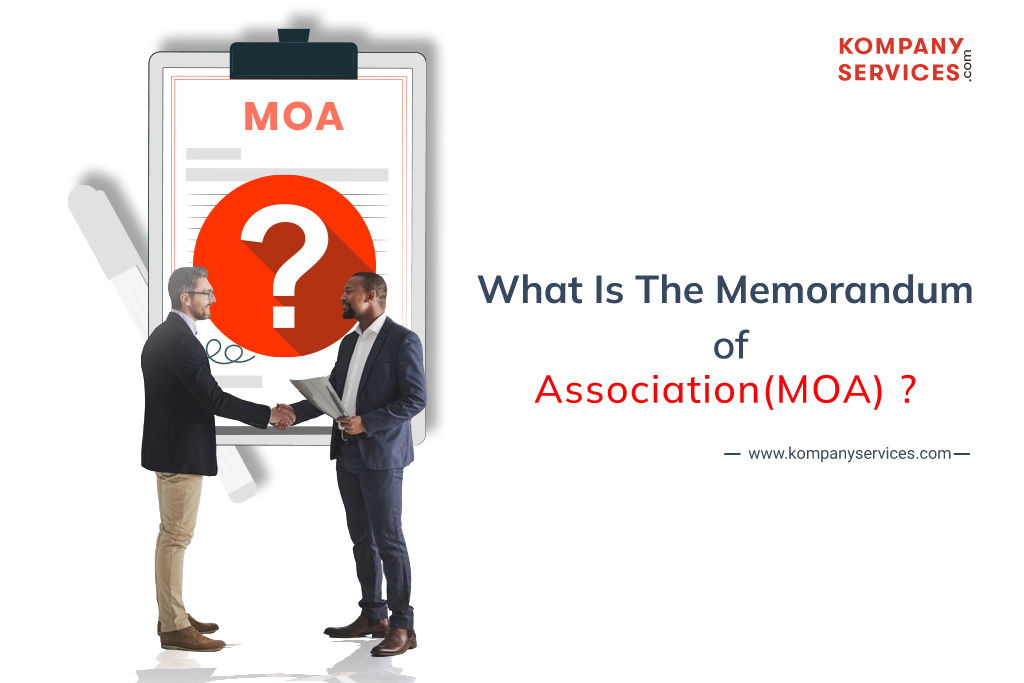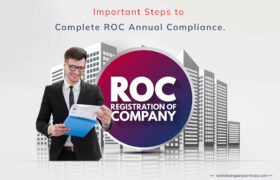This document, known as a Memorandum of Association (MOA), is considered to be the Constitution or Charter of an incorporated company since it contains all of the fundamental legal elements of the organisation, including its name, registration address, business aim, liabilities, and subscription. The entirety of the document is drafted in a certain format on stamp paper of acceptable value, and it is then notarized and stamped by a public notary.
It is of the utmost importance to strictly adhere to the format of the memorandum of association (MOA) in order to preserve its legal validity and guarantee a successful registration with the Registrar of Companies (ROC). In this section, we will delve into the fundamental clauses of the memorandum of association, which are the fundamental building blocks of its structure.
The MoA
Remember that a Memorandum of Association, often known as a MoA, is one of the most important legal documents that an incorporated company must have. Due to the fact that it contains all of the business’s legal and foundational facts that were registered with the ROC throughout the process of company registration, it is commonly referred to as the company’s “Constitution” or “Charter.”
The name, the address of the registration office, the purpose of the establishment, the responsibility of the owners, the capital of the company, and the name of the nominee, if appropriate, are the primary details that are included in this information.
The draft of the Memorandum of Association (MoA) is normally produced on stamp paper by authorised directors of the company. In order for the legality of the document to be established, the signatures of all shareholders are required. Individuals who do not sign the memorandum of association will not be recognised as shareholders under any circumstances, which is an important point to keep in mind.
The document is required to go through a stamping and notarization process in order to guarantee that it will be accepted legally. In order to accomplish this, the shareholders must sign the memorandum of association in the presence of a public notary and two witnesses.
Following this, the notary will add a stamp, which will render the document legally valid. In addition, in order to finish the process, you will need to pay a stamp duty, the actual amount of which is established by the state government.
In accordance with the Companies Act, the legal framework and key provisions of the MOA
Companies that are incorporated in India are required to have a Memorandum of Association (MOA) so that they can begin their operations. Specifically, the Companies Act of 2013 is the primary legislation that governs its legal framework. The Act includes essential rules for regulating the foundation of a corporation as well as its governance through its memorandum of association. It is absolutely necessary to adhere to these regulations in order to conduct business within the confines of the law and to guarantee compliance.
The Importance of Memorandum of Association in the Process of Company Registration and Governance
The significance of the Memorandum of Association (MoA) rests in the fact that it serves a variety of purposes, including playing essential roles in the process of registering a company and conducting corporate activities. This fundamental document not only assures that a company is in compliance with the law, but it also serves as the most reputable and open source of information regarding the company.
Following the initial foundation of the firm, the Memorandum of Association (MoA) becomes a document that is visible to the public and continues to create and define the identity and aims of the company. Let us go deeper into the various functions that make the memorandum of association (MoA) an essential document for any firm that has been incorporated.
Formalisation of the Company: A legitimate and precisely designed Memorandum of Association is required in order for a company to be able to participate in the registration process. When submitting an application for company registration, the memorandum of association (MOA) is one of the documents that is included.
Not only does the Registrar of Companies register the name of the company when the application is received by him, but he also registers the Memorandum of Association for the companies.
Organisational Shifts: You are not permitted to make any fundamental adjustments or modifications to the company without first making the necessary modifications to the MOA. An example of this would be if you are interested in altering the registered office address of the company.
In this case, the application that you submit to the ROC would be backed by a copy of the MOA that has been updated or modified to include the new registered address. Not only will the ROC modify the address after it has received the application, but it will also amend the power of attorney that is registered with it.
Increases Credibility: The Memorandum of Agreement (MOA) of a firm that is registered with the ROC is a document that can be viewed and reviewed by the general public. Due to the fact that every information with which the firm is working on the ground can be readily and correctly verified, this contributes to an increase in the credibility of a company, particularly for its investors and creditors.
The Memorandum of Association (MOA), which is stored at the company’s registered office, is a reliable source of information that acts as a vital reference point for both internal and external visitors. It guarantees that executives and employees have quick access to information, which helps to build a clear knowledge of the mission which the organisation is responsible for.
Furthermore, external stakeholders, such as investors and regulatory agencies, are able to reap the benefits of clear insights into the structure and aims of the organisation. via the maintenance of the MOA at the registered office, the company ensures that it is in line with regulatory requirements and creates trust via transparency.
In terms of compliance, supremacy: The powers that a firm possesses are outlined in the MOA. It is intended that any action taken by the company or any of its stakeholders that is in direct opposition to the provisions of the MOA would be regarded as invalid and unenforceable.
Even the company’s Articles of Association, which include the rules, regulations, and procedures of its internal management, ought to be drafted in a manner that is completely in accordance with the stipulations of the MOA.
Amendments to the Memorandum of Association Clauses
There are six essential sections that make up the Memorandum of Association (MOA), and each of these clauses serves a different purpose in the process of forming the legal framework of a corporation. A company’s constitution is comprised of a number of clauses, the most important of which are the Name Clause, the Registered Office Clause, the Object Clause, the Liability Clause, the Capital Clause, and the Declaration Clause.
One of the most important documents that must be submitted in order to complete the process of registering a company in India is the Memorandum of Association (MOA). This legally binding document, which is comprised of six sections that have been precisely designed, contains all of the essential information that is required for the establishment, operation, and governance of a corporation.
Each paragraph is extremely important, and its significance ranges from the most essential characteristics, such as the name and address of the company, to the most precise financial data, such as authorised and subscribed capital. Not only does the fact that the MOA is accessible to the public guarantee openness and integrity, but it also helps to strengthen the company’s legal status and identity.
The explanation that we have provided regarding the terms in the Memorandum of Association makes it abundantly clear that the creation of the MOA in the appropriate format is not merely a formality but rather a dynamic document that shapes the essence and longevity of a company.




